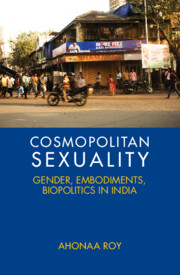Book contents
- Frontmatter
- Dedication
- Contents
- List of Figures
- List of Abbreviations
- Acknowledgements
- 1 Introduction
- 2 Bioengineering, Beauty and Racial Sensibility
- 3 Contesting Violence, Constructing Power
- 4 Festival, Spectacle, Eroticism
- 5 Biopolitics and Biosocial Citizenship
- 6 Performative Participation, Sexual Health and Community Development
- 7 Cosmopolitanism: Rights, Citizenry and the Culture of Representation
- 8 Postscript
- Glossary
- Index
2 - Bioengineering, Beauty and Racial Sensibility
Published online by Cambridge University Press: 14 October 2022
- Frontmatter
- Dedication
- Contents
- List of Figures
- List of Abbreviations
- Acknowledgements
- 1 Introduction
- 2 Bioengineering, Beauty and Racial Sensibility
- 3 Contesting Violence, Constructing Power
- 4 Festival, Spectacle, Eroticism
- 5 Biopolitics and Biosocial Citizenship
- 6 Performative Participation, Sexual Health and Community Development
- 7 Cosmopolitanism: Rights, Citizenry and the Culture of Representation
- 8 Postscript
- Glossary
- Index
Summary
BOMBAY, MALVANI SLUM AND SAKHIYANI
The ladies’ compartments on the Bombay suburban railways are usually positioned at both ends of the train. The trains are crowded with passengers all day. The popular ‘western line’ is frequent and regular, with trains scheduled every three minutes. The platforms swarm with people – passengers, vendors and railway police constables – all jostling past the fast-food stalls, trinket sellers, goods and parcels. To board the train is a challenge – there is every possibility of missing it. It is best to mingle with the crowd and get pushed through towards the train just as it arrives at the platform. Before first light, the train is crowded with fisherwomen and vegetable vendors commuting to the city market from their villages on the urban fringes of Bombay to sell their catch from their village ponds or produce from their fields. At that hour, it seems the trains are no longer passenger trains but chaotic goods trains crammed with fish, vegetables and tradespeople. At seven in the morning, the crowd is replaced by office workers, school children and college students. At midday, the trains are less busy. Then at three in the afternoon the rush begins again, continuing until midnight when the vegetable vendors and fisherfolk return to their villages after their long day in the city.
My usual destination during my fieldwork was Malad, a place in suburban Bombay. After reaching Malad station, it was a twenty-minute autorickshaw ride to Malvani slum. The rickshaw would pass through the busiest areas of Kolad, past shopping malls, office buildings, high-rise apartments and multiplex cinema halls. An activist friend once told me about the history of Malvani. He said that it had always been marked as a notorious place, infamous for murders, underworld gangs, burglaries and various forms of extortion. He added that Hindu–Muslim communal violence was an everyday story. Some ten years ago, he said, the Municipal Corporation of Greater Mumbai (MCGM) ‘dumped’ the migrant hijras in Malvani. They had been scattered ‘here and there’ in the city. Malvani had such a bad reputation that my friends who are acquainted with the city were filled with anxiety when they heard that I had chosen it as the field-site for my doctoral research. But I knew that this would be the ideal location to study the hijras.
- Type
- Chapter
- Information
- Cosmopolitan SexualityGender, Embodiments, Biopolitics in India, pp. 33 - 75Publisher: Cambridge University PressPrint publication year: 2023



